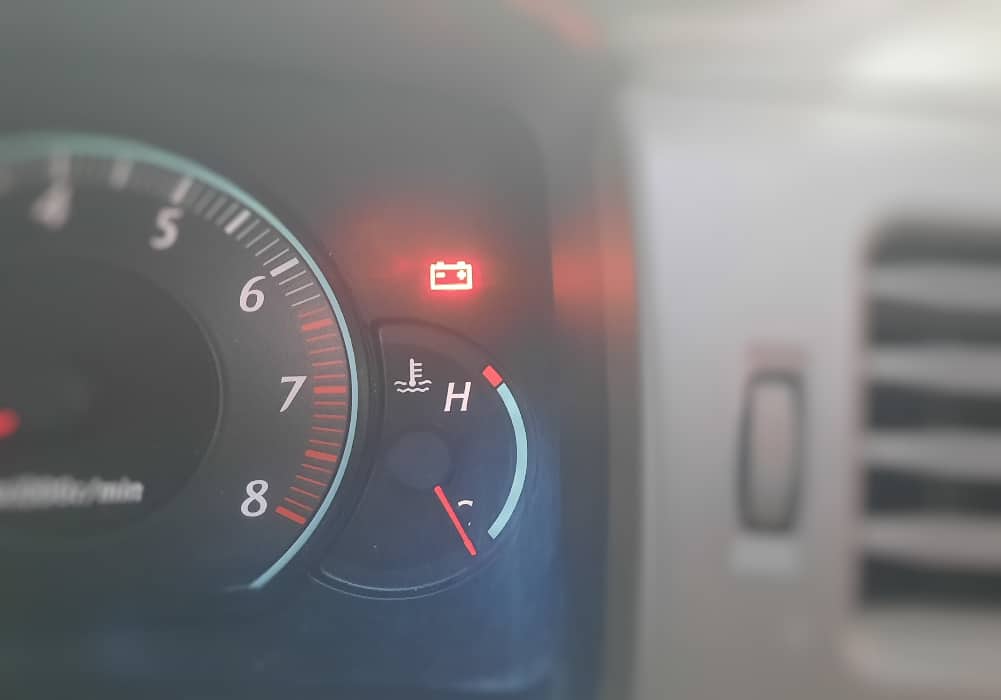If it is your first time seeing the battery warning light come on when idling, you may not know what to do and may be tempted to ignore it. But is this a smart decision? Are there any risks you’re taking on? What does it even mean?
if this is you then read on because this post explains what it means when the battery light comes on, what’s probably causing it to come on, and also provides solutions to get the electrical charging system working well again.
What does it Mean?
The battery warning light should only light up as the car starts then go off after a few seconds. If lights up later when the car engine is idling and then goes off when the car picks up speed then it probably indicates that the battery is not charging properly at the lower RPMs.
Should You Continue Driving the Car? What are the Risks
The battery light is a warning light. Failure to fix the underlying cause can result in the car stalling as you drive should the car lose all power, the car not being able to start because the battery is not sufficiently charged, or in extreme cases, the battery failing.
Fixing the underlying causes promptly can help you prevent the above issues from happening.
What Causes the Battery Warning Light to Come On (+Solutions)?
The battery warning light may come on when the car is idling because of the following (listed in order of increasing complexity and cost to fix).
#1. The car battery terminals or alternator connections may not be firm or making clean contact. This in turn affects how well a battery not only charges but is able to power the car’s electrical system when required.
Check for corroded battery terminals
Inspect the car battery terminals for any corrosion, the greenish-yellow powder coating that forms around the battery posts. if present, it can restrict how much current is able to flow to and from the battery and can trigger the battery warning light.
Remove all the corrosion and make sure the battery terminals are clean and make solid contact with the battery posts.
Check for loose battery terminals
The battery terminals may be loosely fixed and not make firm contact with the battery posts. This is necessary for the current to flow to and from the battery.
Try to wiggle the battery terminals to check for looseness. Fix any loose terminals.
#2. The alternator belt may be worn and loosely fitting affecting the car’s ability to effectively charge the battery at lower RPMs. Check the belt for signs of wear and tear. Is it firmly fitted?
If loose or worn, fit properly or replace with another belt of the same type as recommended by the manufacturer and check if this clears the faulty condition.
#3. The car battery may be failing. If the battery is damaged, shorted, or lost its ability to hold charge then the battery light can come on too. Have the battery tested at an auto parts store or use a good-quality portable tester to check the health of the battery.
Replace the faulty battery with a new battery with the same CCAs or Ah. Check if this stops the light from coming on at idle.
#4. The alternator may be faulty. The battery warning light may come on if the alternator is undercharging, not charging at all, or overcharging. Inspect and confirm that the alternator’s positive and ground connections are firmly connected. If the battery still comes on, have the alternator tested at an auto parts store.
If faulty, replace it with another and check if this stops the warning light from coming on when the car is idling.
Closing Thoughts
If the battery warning light comes on when the car is idling and goes off when it picks up speed, it indicates that the car battery is not charging properly at the lower RPMs.
This may be a result of corrosion buildup around the battery terminals, loose battery terminal connections, or a faulty battery or alternator.
Hope this helps!
Recommended Posts
